-
Posts
357 -
Joined
-
Last visited
-
Days Won
2
Content Type
Profiles
Forums
Resource Library
Events
Gallery
Blogs
Store
Community Map
Posts posted by 2996 Victor
-
-
On 5/6/2020 at 3:40 PM, 2996 Victor said:
I'll have to try and get a copy of that - it sounds like essential information!
Thanks for the tip, @airfixfan, it's hugely appreciated.
With kind regards,
Mark
Now that I'm a fully paid-up member of the IRRS
 I've been in touch about obtaining the appropriate back issue of the Journal. There was also a second article on MGWR wagon stock in Issue 55 for June 1971, and one on carriage stock in Issue 56 for October 1971 - looking forward to their arrival!
I've been in touch about obtaining the appropriate back issue of the Journal. There was also a second article on MGWR wagon stock in Issue 55 for June 1971, and one on carriage stock in Issue 56 for October 1971 - looking forward to their arrival!
With kind regards,
Mark
-
 2
2
-
-
Not a great deal has been happening on my workbench since my last post, with one or two things around the house to sort out.
I'm waiting on the 20thou styrene strip for the Loco Coal wagons' internal side knees, so no progress there, unfortunately.
In the meantime, I thought I'd make a start on a short rake of three or four ballast wagons from the HMRS drawing. Tuesday afternoon was spent working out the dimensions of the wagons' components, while on Wednesday I tried to make a start on a couple of floors. As the floorboards are 11" wide, they need to be hand scribed, and my efforts ended up with a couple of rather too wonky planks. Yesterday I tried again with a successful outcome, but at that point progress was interrupted.
Thankfully, I'm planning on running two or three of these with a full load of ballast, so they won't need any interiors: the one with the best interior will have a load of a few sleepers and other PW odds and ends.
Hopefully today will see some sides and ends marked out, and perhaps even a bit of assembly.....
Kind regards,
Mark
-
 3
3
-
-
1 hour ago, airfixfan said:
Looking for something else today and came across IRRS Journal 51 with an 18 page article with photos on MGWR wagons only!
I'll have to try and get a copy of that - it sounds like essential information!
Thanks for the tip, @airfixfan, it's hugely appreciated.
With kind regards,
Mark
-
 1
1
-
-
Hi @Galteemore,
many thanks for your kind words! Wagon construction is actually quite fascinating, but from a modeller's point of view its useful to have an insight into what's what on the visible parts of any given vehicle. If anyone's interested, I can do no better than refer to Chris Crofts' series of articles in Model Railway Journal Nos.12, 13, 14 and 15.
With kind regards,
Mark
-
 1
1
-
-
Over the weekend, I've started adding the details to the pair of 7 ton Loco Coal wagons:
http://
As usual, I've made almost exclusive use of Evergreen styrene strip. The end pillars are a bit awkward, as they scale out at about 50thou square, which isn't a size that's available, of course. My solution is sand down 60thou square strip (yes, really!) until it's the right section. To try to keep it square during sanding, I keep hold of one end of a strip, and pinching it between a folded piece of sandpaper I draw the strip through the paper half a dozen times, sanding two opposite sides at once. I then rotate it through 90 degrees and repeat, and so on until I've rotated the strip 360 degrees. Then I check the size and repeat as necessary!
The iron work consists of the corner plates which I've already talked about, plus washer plates and side knees (usually referred to as "strapping"). On wooden-framed wagons, the side knees are usually internal and are positioned either side of the door openings to support the wagon's side sheets, passing through the floor and turning under to be bolted to the frame members. As they have a structural job to do, the side knees are usually quite hefty iron. The remainder of the iron work is a bit lighter and consists of washer plates whose job it is to prevent the bolts holding everything together from pulling through the woodwork. Hence, there are washer plates for the end pillars and corner plates which are visible inside the wagon bodies:
http://
The side knees haven't been added as I found I didn't have any 20thou styrene strip left, which is a bit annoying! The remainder of the iron work is represented by 10thou x 30thou strip for the washer plates and 10thou x 40thou for the vertical hinge plates on the doors:
http://
The wagon on the left of the two has had its end pillar washer plates sanded down to about 5thou thickness; 10thou is a bit on the thick side, scaling out at 3/4" thick at 4mm/1ft scale. The layout of internal washer plates is conjectural but typical, and I'm following Derby practise and leaving them smooth - Derby used countersunk square-headed coach bolts with the countersunk head on the inside of the wagon. External bolt heads will be represented by Archer Rivet Transfers. I've also sanded the headstocks to their correct widths, using a packing piece to ensure they're all filed squarely and to the same size.
Hopefully, I'll make a bit more progress this afternoon with the door iron work details, but until the material for the side knees arrives, these two will be stuck in limbo.
With kind regards,
Mark
-
 4
4
-
 1
1
-
 2
2
-
-
Superb modelling, inspired and inspirational! Please keep the photos coming!
Kind regards,
Mark
-
 1
1
-
-
Hi Angus,
This looks like being a fantastic project, and although 2mm/1ft isn't my scale, your recent posts elsewhere show that you've got it down to a fine art.
I for one will be following closely for inspiration and ideas, so looking forward to seeing how you get on!
With kind regards,
Mark
-
 1
1
-
-
On 4/30/2020 at 3:41 PM, 2996 Victor said:
Ballast Wagon, 9ft w/b, 15ft o/h dated 1894
As the HMRS is in lockdown, I've been a bit naughty with this drawing and taken a screen-shot, and printed it to fit an A3. It certainly looks like a drawing that's been rolled up for a long time.
Although the HMRS logo is still present, it's come out pretty clear, clear enough to start to produce my own drawing, except that the underframe details are not that clear. The underframe appears to be channel section iron or steel with what look like wooden extensions to headstocks to act as door buffers.
Now, I'm an engineer by trade and I pride myself on being able to read an engineering drawing, but the lack of clarity is mildly frustrating.
Bearing in mind that the drawing is from the Metro Cammell archives, and hence from a private builder, there's no reason why these wagons couldn't have had iron or steel underframes. But apart from a few goods brakes, the photos of MGWR wagons that I've seen all have wooden frames.
I'll have a fresh look at it tomorrow!
In the meantime, though, I've sent my membership application to the IRRS

-
 2
2
-
-
10 hours ago, Mayner said:
The Plough Vans were introduced in 1904 for use with the new ballast hopper trains Padraic O'Cuimin notes in Wagon Stock of the MGWR that 4 Ballast Vans 42,43,46&48 were introduced in 1883 one of which 232A was in Departmental service in 1970.
A number of GSWR Ballast Brakes from the same period survived into the 1960s in use of lifting trains, they were long wheelbase outside framed vehicles with a birdcage look out at one end and a large compartment for accommodating the men and their tools, possibly doubling as a mess and sleeping van.
The 1883 Ballast Vans are not listed in POC's list of MGWR GAs drawings and diagrams and do not appear in the IRRS Compendium of MGWR Goods Vehicle Drawings. Intriguingly his schedule of drawings includes a Diagram which he prepared of a 1874 ballast wagon with "Guards Compartment" in .
It might be worth asking Richard McLaughlin whether POCs personal MGWR archive was bequeated to the IRRS.
Richard Chowan's No 11 may be a model of one of the Incline Brake Vans built by Metropolitan for the MGW in 1883, POC had no particulars of their appearance but they were listed as 1 compartment 4 wheel vehicles.
Hi John,
many thanks for your comprehensive reply, most imformative as always! The photo of Richard Chown's brake van is intriguing: presumably the incline vans were used specifically on the cattle specials to the docks? The 1883 ballast vans you mention sound like what would be necessary to accompany some ballast opens in a PW train - I'm afraid I've only got the first page of POC's Wagon Stock paper, so apologies if you've had to repeat some information!
Many thanks as always and kind regards,
Mark
-
19 minutes ago, Midland Man said:
I took them off the model to see and yes they are 12mm apart so scale wise they are.
Yes that was what I was thinking as well problim is the plaster card ain't square so the roof will be kind of bent.
MM
You could use bargeboards to disguise any small discrepancies between the walls and the roof?
Best regards,
Mark
-
 3
3
-
-
Great work! Keep the photos coming, please. How about corrugated iron for the roof?
With kind regards,
Mark
-
 1
1
-
-
1 hour ago, jhb171achill said:
Yes (and the C & L, a century ahead of their time, painted at least a couple of open wagons YELLOW for ballast trains!), the beige colour would have been current in 1900-05. Certainly after 1925, but possible as early as the mid 1910s, they became standard grey with white lettering.
It would seem that they had black lettering when beige; I do not know whether the chassis was the same beige, or black. It was usual, as well known, for Irish companies to paint wagon chassis the same as the body colour, but there some exceptions.
As for the lettering, I cannot be sure, but it is possible they only had the normal "M G W (number)". Most old photos of most maintenance vehicles I've ever seen tend to have "P W DEPT." rather than "Engineering" - and in a model I'd be more inclined to go for that - or, even, only use "M G W" and a number, pending anything more specific turning up. Sorry that's the best that I can do!
I assume a ballast plough would be the same beige, or possibly the brown that some vans were then. It would not be green.
I will have a poke about tonight and see if I can find anything else.
Hi Jonathan,
Thank you so much for once again coming to the rescue - I thought you'd have the answers!
The distinctive sand-beige livery with black lettering may have been considered sufficiently different to discriminate between traffic and PW stock without PW Dept (or similar) branding, so I'd say your suggestion to just use the MGWR and number pending firm evidence is a good option. I can see a short PW train being on my list of things to build!
Did all PW brake vans have ploughs - presumably there's a drawing somewhere.....
By the way, are there any stock books in existence that give running numbers?
Thank you once again for all your help and advice.
With kind regards,
Mark
-
 1
1
-
-
4 hours ago, Midland Man said:
Don't have a clue of the colors but I suspect it was grey. The problim is I am only really good on the midlle of the midland but I can tell you what would pull it along and that would be a MGWR B class 0-6-0 whitch would have been never on a branch for two reasons
1. When the midland used them it was only for the mainline.
2. In the 20s the midland got the great F class or cattle engines as drivers called them. These took out every 0-6-0 tender apart from. The L/LM class ( they were basically turned into J15s by the GSR with superheated Z boilers).
Hope This will help in any way.
Hi MM,
Thank you for the extra info, very useful as always, and although the later period is after my preferred era, it's always useful as well as interesting to know what changes took place and when.
With kind regards,
Mark
-
1 hour ago, Midland Man said:
The powers can was on the Breatland track layer and would have never been on branch lines.
Hi MM,
Many thanks - understand that as it was far too big (and far too late for my chosen period), but what I wondered was whether the Power Van would have been in the sand-beige livery Ernie Shepherd's book mentions, as the form and colour of lettering could/would be a clue to MGWR PW wagons in general.
With kind regards,
Mark
-
On 4/30/2020 at 3:41 PM, 2996 Victor said:
Ballast Wagon, 9ft w/b, 15ft o/h dated 1894
Dear All,
I'm returning to the question of ballast wagons, and the 3-plank in the HMRS link above, dated1894.
I have yet more questions (!), which hopefully the erudite among will be able to help with - Jonathan @jhb171achill and John @Mayner will, I'm sure know the answers (no pressure, chaps!).
Ernie Shepherd gives details of wagon liveries in his book, of course, and we've already touched on these in this thread. He states that PW wagons were painted a sand-beige colour, which I've seen mentioned in other threads on this Forum. I would like to assume that this was the case for many years and would be appropriate for my my era!
That being the case, presumably the lettering would have been black? But what would that have consisted of? Presumably "MGWR" and the vehicle number, plus "ENGINEER'S DEPT" or "PW DEPT"? In the photo on page 101 of Ernie Shepherd's book, is Power Van No.1 this livery?
Thanks in advance for your thoughts, folks!
With kind regards,
Mark
-
I meant to add that the basic materials I use are styrene sheets, strip and sections of various thicknesses, mostly Evergreen although there's a fair amount of Slater's Plastikard, too. For assembly, I use solvent adhesive for styrene parts, MEK for preference as its not too strong, but if I need a bit more oomph I use PlasticWeld. Any other materials that need to be joined to my wagons are fixed usually with cyano and occasionally with epoxy. For smoothing, I have various grades on fine sandpaper, some well-worn, and for filing my preference is to use a wood-cored emery board, such as women use for their nails, as they are strong and file a straight, flat surface. To cut the parts, I either scribe with the Olfa P-cutter and snap, or use a Swann Morton scalpel and No.10 or 10A blade.
A small update on the loco coal open box wagon builds with the addition of corner plates, which are made from two widths of Evergreen strip, 10thou x 80thou and 10thou x 100thou. I cut off over-length sections of four of each width per wagon making sure that one end at least is square! The narrow sections go on the ends of the wagons, with the "square" ends at the bottom flush with the top of the headstocks. They are set so the edges line up flush with the corners of the wagons but with no overlap. The wider section strips form the faces of the corner plates on the wagon side, and again the "square" ends are set flush with the tops of the solebars. Bearing in mind that these strips are 20thou wider, they are set so that their inside edges are 2mm in from the end of the wagon, giving a narrow overlap of 10thou over the edge of the end plates.
I'm afraid that all sounds a bit confusing - a sketch or two would probably be clearer, but hopefully this photo should help:
http://
Although the corner plate strips have been trimmed to length, you can see the light behind the overlapping edge.This photo shows one wagon has had its corner plates added and trimmed to length, while the second one is still a work in progress with the Evergreen strips to one side:
http://
Wagon corner plates were pressed steel, of course, and should have a rounded fold. The way I achieve that is to gently file the overlap down til its gone, and then file a small 45 degree chamfer onto the corner which is finally rounded off to a small radius. The trick again is to not overdo - photos are the best way to get a feel for how much to file away. Hopefully this photo should show the slight radius to the finished corner plates:
http://
Its easier to finish the corner plates before adding the end pillars or side strapping, as the latter just get in the way!Anyway, back to the bench!
Kind regards,
Mark
-
 6
6
-
-
Dear All,
many, many thanks for all your kind words and encouragement, if my efforts can in some little inspiration to others to have a go, then I'll be happy indeed!
MM, thank you - I'm just doing my best! I started scratchbuilding goods stock probably thirty-odd years ago and was building kits before that, although there was a long break in the middle, and really its all a matter of practice. The greatest trick I found is to take my time, take maximum care marking out and cutting out parts, and get the basic structure square and to the correct dimensions. If I'm not happy with something, I just try again - I've scrapped more models than I care to think about!
At the same time, I've also found its important to set a standard to work to and to stick to it for all my builds - it's all too easy to get caught up in super-detailing to the Nth degree, but it can become a millstone when one vehicle takes three weeks to finish and you've twenty more exactly like it to build! As someone once said, strive for excellence, not perfection! I'm no expert and I'm certainly not saying my way of doing things is necessarily the best way, but if I can help with any hints, tips or advice, please, please do ask a question!
I'm planning on a brake van soon, and its progress will be on here - watch this space!
With kindest regards,
Mark
-
 3
3
-
-
Dear All,
in case anyone's interested, I've posted my workbench thread here, and its also linked in my signature. I hope it'll prove to be useful, and I'm always open to hints and tips for new and better ways of model making, so please don't hesitate to add your posts and photos there as well as here.
With kind regards,
Mark
-
 1
1
-
-
5 hours ago, Mayner said:
I think Mike is referring to this one
The vents or whatever their purpose were a standard detail on MGWR Standard Covered Wagons and would have been very small for unloading grain.
Its just about possible bulk grain was carried in these wagons and discharged through the doors, just as boxcars were used in the States & Canada up to the widespread introduction of grain hoppers in the 1980s.
The overhead gantry above the sidings at Ballysadare opens up all sorts of interesting possibilities.
Hi John,
I'm afraid I've no idea what the castings are that @Mike 84C is referring to, although at first I wondered if they were label boxes for consignment labels, then looking at the shape of them again, I wondered if could they be drains for washing out after the vehicle has been used for livestock, but I suspect they're too far up the vehicle's sides.
Thanks for the link, those photos are full of atmosphere and great detail on the convertibles, including useful numbering!
With kind regards,
Mark
-
My first project on here will be the scratchbuild of MGWR open box wagons, using the drawings in Ernie Shepherd's book, the first two wagons will be completed as locomotive coal wagons which from the photograph in the book show some detail differences to the drawing.
So here goes:
First off is a photo showing my copy of Ernie Shepherd's book, some notes made for dimensions, together with my TV and the corner of my weathering tray!
http://
The second photo was taken during preparation of the sides and ends, plank lines and door outlines scribed in on both sides! The base material is 30thou plastic sheet, this scales out at approximately 2-1/2", which was the common thickness for side and end sheets of wagons in the late-Victorian era. I use an Olfa P-Cutter to scribe the lines as this removes a sliver of plastic rather than indenting a line which usually causes a distortion. Used with care, by angling the P-Cutter its possible to create a prototypical chamfer on the top edge of each plank. The first set of sides/ends are cut out, the second set are in strip form, and three more sets are still on the sheet.
http://
The third photo shows the first two sets assembled; these will be the loco coal wagons. I use simple butt corner joints as its far easier to keep the length of the sides and ends correct than if you try to file a chamfer where its easy file too much and accidentally shorten something! I use the grid on the cutting mat to keep things square, and add the floor afterward having measured the internal dimensions of each wagon individually.
http://
Photos 4 and 5 show one wagon having had its floor, headstocks and solebars added. The floor is a bit of a cheat in that its cut from Evergreen 100thou (2.5mm) spacing V-groove sheet, 40thou thickness. Its cut 2mm narrower than the internal width of the wagon body, the edges being made up by a strip of 40thou square which is intended to represent a curb rail. Before adding the headstocks and solebars, the underside of the wagon body/floor assembly was sanded smooth on a flat surface so that the underside provides a flat base to mount the headstocks and solebars. These are cut from Evergreen 60thou x 156thou strip, the headstocks are wider than the wagon body, and these are cut over-wide to allow for filing down to the correct dimension using a template.
http://
http://
Thats it for now as it's time for dinner - I'll post up some more photos tomorrow showing how I create the corner plates.
All the best,
Mark
-
 6
6
-
 3
3
-
-
The time has arrived to start a workbench thread for my projected MGWR branchline terminus layout, where I'll be building wagons, carriages and eventually locos, plus of course structures and the other little bits and bobs that go into creating a hopefully convincing model railway.
The period I'm interested in is 1900-1905. This is the timeframe I usually go with, and my other projects are almost all set in this period of transition from Victorian to Edwardian eras.
My standard gauge projects, Great Western Railway in Somerset and Cambrian Railways in mid-Wales, will be to EM Gauge Society standards. I'm a member of that Society, and for consistency's sake I want to stay with EMGS standards but using the correct gauge for 4mm/1ft scale of 21mm. While I applaud anyone who can create a convincing model railway, no matter the scale or gauge, personally I think its particularly important to use the right gauge as this is such a characteristic feature of Ireland's broad gauge railways.
I've always found that one of the more difficult aspects of model-making is setting the standard to work to consistently. Unfortunately, I'm not a fast worker - continental drift is quicker - which means that while I strive for excellence I don't want to take forever to achieve it! Thus, I've reached the point where my specification for A N Other Goods Wagon will be:
21mm gauge, EM Gauge Society standards
Etched axleguards with whitemetal, plastic or 3D-printed axlebox/spring assemblies
Rigid underframe (fit inside bearing compensation unit if necessary), although I may compensate.....moving the goalposts already!
Improved brakegear if a kit
Sprung buffers
Couplings - ? - I haven't decided yet but they must be unobtrusiveSo that's the preamble out of the way, and we can move on to something that's hopefully a bit more interesting!
-
 5
5
-
-
The Historical Model Railway Society has a number of MGWR drawings and photographs, including such gems as:
Open Cattle Wagon, 8ft w/b, 14ft 2ins o/b dated 1885
Ballast Wagon, 9ft w/b, 15ft o/h dated 1894
Covered Goods, 8ft w/b, 14ft-2ins o/b dated 1895There are also quite a lot of other goods wagon and carriage drawings available, although as there aren't thumbnails of these it's difficult to tell exactly what they are, as well as photographs of mainly the locomotive stock. Unfortunately (and I say this knowing and taking into account that the HMRS is run entirely by volunteers in their spare time), the drawing and photograph service is slow at the best of times. At the moment it's completely shut down, of course.
There are also some drawings in "19th Century Railway Drawings in 4mm Scale" by Alan Prior: a GS&WR convertible, and an open cattle and a coal wagon from the Ulster Railway.
As an aside, there's a rather nice open cattle wagon kit available from 5&9 Models, but its not an Irish prototype, of course!
All the best,
Mark
-
 1
1
-
-
10 minutes ago, Galteemore said:
Some issues are still available from Wizard Models at a fair price - https://www.wizardmodels.ltd/?s=Rail+model+digest+&post_type=product - 1 2 and 6 feature David Malone’s stuff. Seems like remaindered stock rather than s/h.
These magazines are well-worth seeking out, and not just for David Malone's articles. As far as I know, there was a Preview Issue and six numbered issues, and unfortunately that's as far as it went.
David Malone's "Modelling the Irish Broad Gauge" articles appeared in Issue 1 (Part 1: A Bit of Background Blarney), along with a separate two-page colour spread, Issue 2 (Part 2: Building 5ft 3ins PW), Issue 4 (Part 3: Signalling) and Issue 6 (Part 4: Irish Goods Stock).
Definitely plenty of useful information in these magazines!
With kind regards,
Mark
-
 3
3
-
-
13 hours ago, Mayner said:
The MGWR covered cattle wagons were quite different in design to other companies cattle wagons and made up a relatively small proportion of the livestock carrying fleet with over 1613 Convertible & 450 Covered cattle wagons in service in 1924.
Some of the cattle wagons were vacuum piped and later fitted with vacuum brake gear which indicates that they are likely to have been used for urgent traffic running in passenger and mail trains.
The Midland tended to go through phases of rebuilding open cattle wagons as standard covered wagons, eliminating the type by 1885 then building small batches between 1885 & 1895.
Unfortunately I have been unable to find a good close up photos of the MGWR covered cattle wagons or find a drawing or photo of the open cattle wagons.
Upper photo un-credited, lower photo ©L&GRP 22486 Loco No133 "Titian" both photos appear to have been taken at the same location on the same day.
Jack Kennedy's photo of 129 "Celtic" one of the MGWRs largest and most prestigious main line passenger loco on a cattle train at Athenry illustrates the relative importance of cattle traffic on the Midland compared to other Irish railways, as Jack once commented the MGWR would not have been interested in "The High Speed Train" (IC125) unless it was capable of hauling a cattle train. The Midlands express passenger locos had relatively small 6'3" driving wheels compared to similar GSWR & GNR locos to improve their ability to haul mail and cattle trains, the D & K Class 2-4-0s & F Class 0-6-0s were true mixed traffic engines with 5'8" driving wheels similar in concept to the Scottish "Intermediate" 4-4-0s similar to the North British "Glen Class" & Highland "Loch" Class.
Nice to see the photo of the 1898 MGWR Guinness Wagon, these were basically a lengthened hard topped version of the Standard Covered Wagon or convertible. Some of the more modern 10T covered wagons introduced for Guinness traffic in 1915 may have carried Guinness labelling, these wagons were similar in appearance to the Irish Railway Clearing House standard covered wagons used by the GNR(I) & SLNCR and the Provincial Wagons kits.
Hi John,
excellent photos, thank you! The dedicated cattle wagons are an interesting design, and its also interesting to note the convertible marshalled next to a cattle wagon in the first photograph. The idea of using convertibles for general goods traffic and livestock seems a bit alien to me, having been brought up on English railways! The limewash around the louvres is characteristic, isn't it? The side view in the second picture could be used to create a drawing if necessary, working on know dimesions such as wheel diameters and the known dimensions of "Titan".
The cattle wagons look quite familiar in their design - I'll have to see if I can find anything similar. London & South Western Railway seems to ring a bell, for some reason, but they could equally be similar to most English cattle wagons with the exception of the GWR, of course. I'd certainly like to include some open cattle wagons in my fleet, but if they were camera-shy and no drawings exist, then that's off the agenda, unfortunately.
With kind regards,
Mark
.png.c363cdf5c3fb7955cd92a55eb6dbbae0.png)


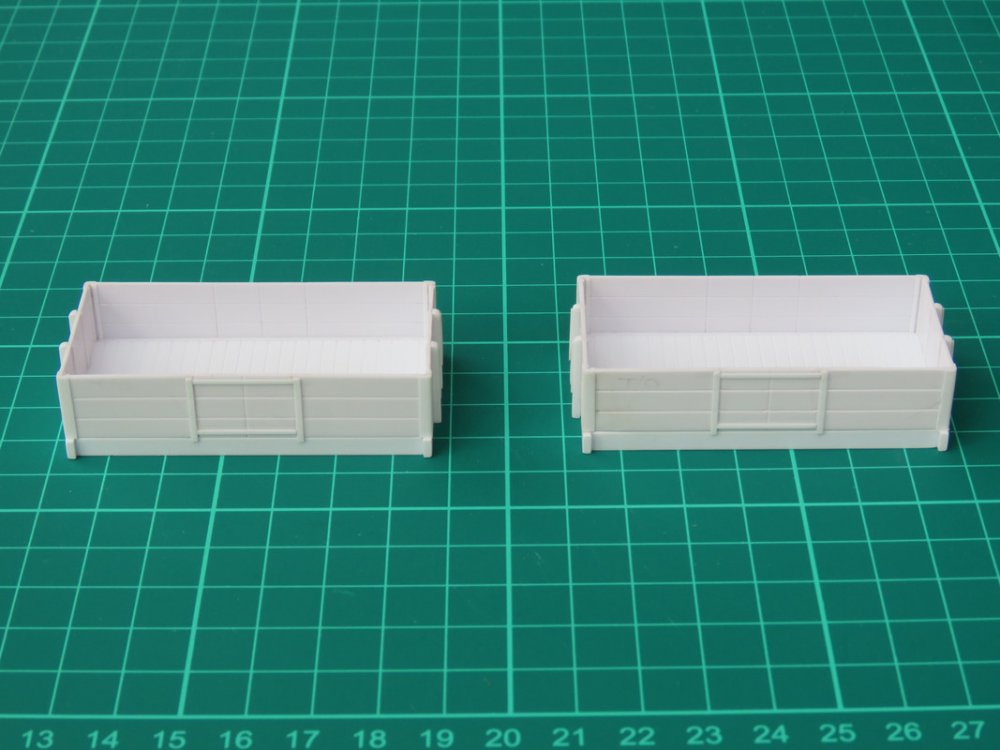


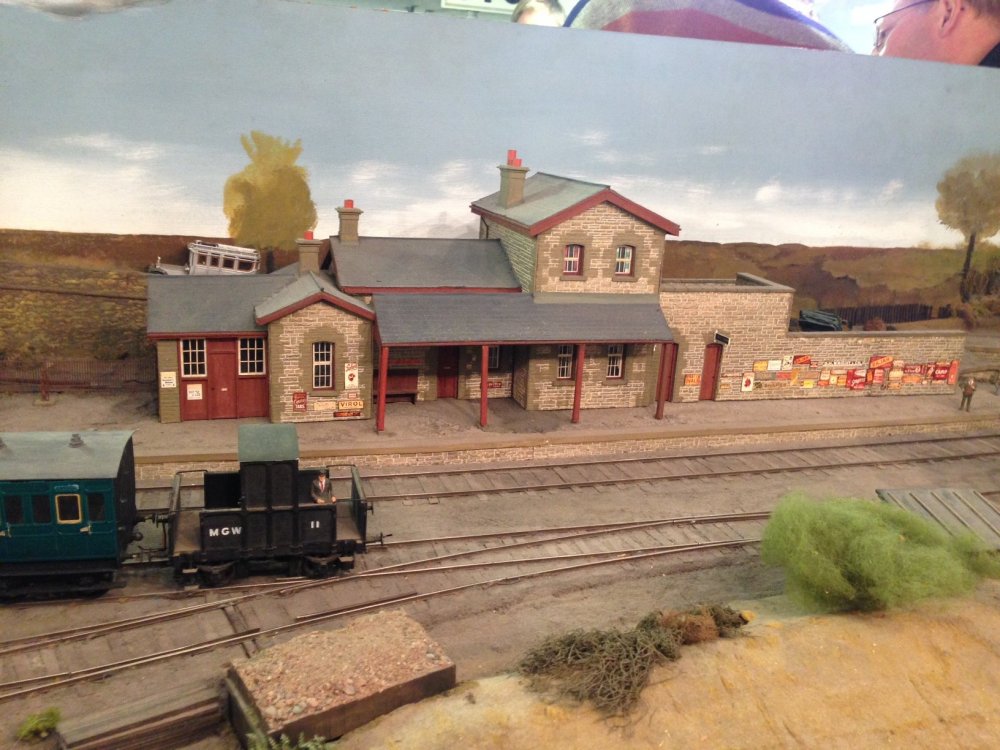
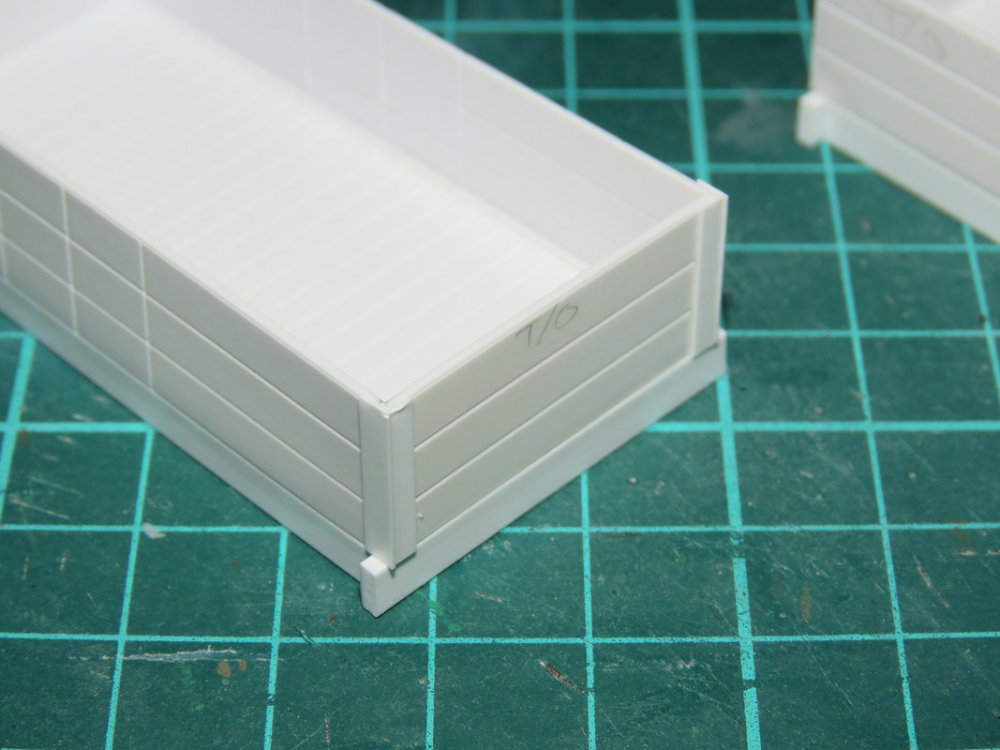

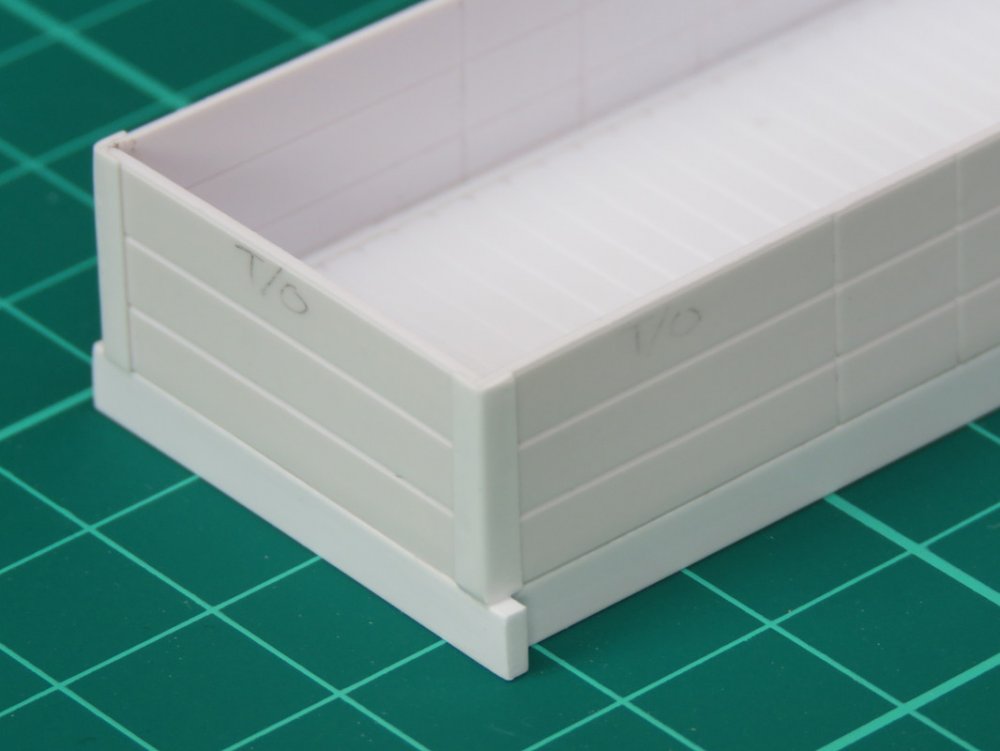
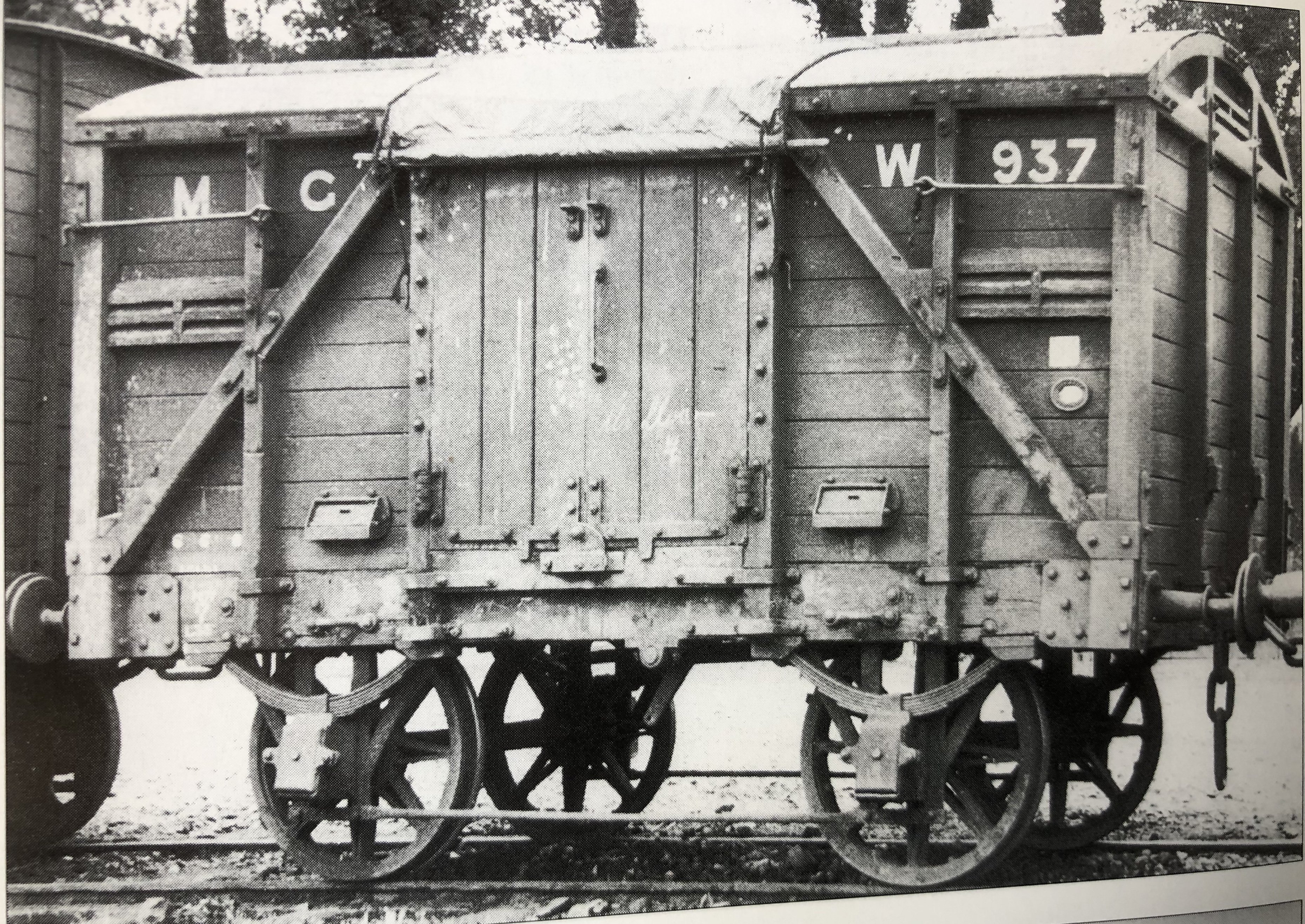
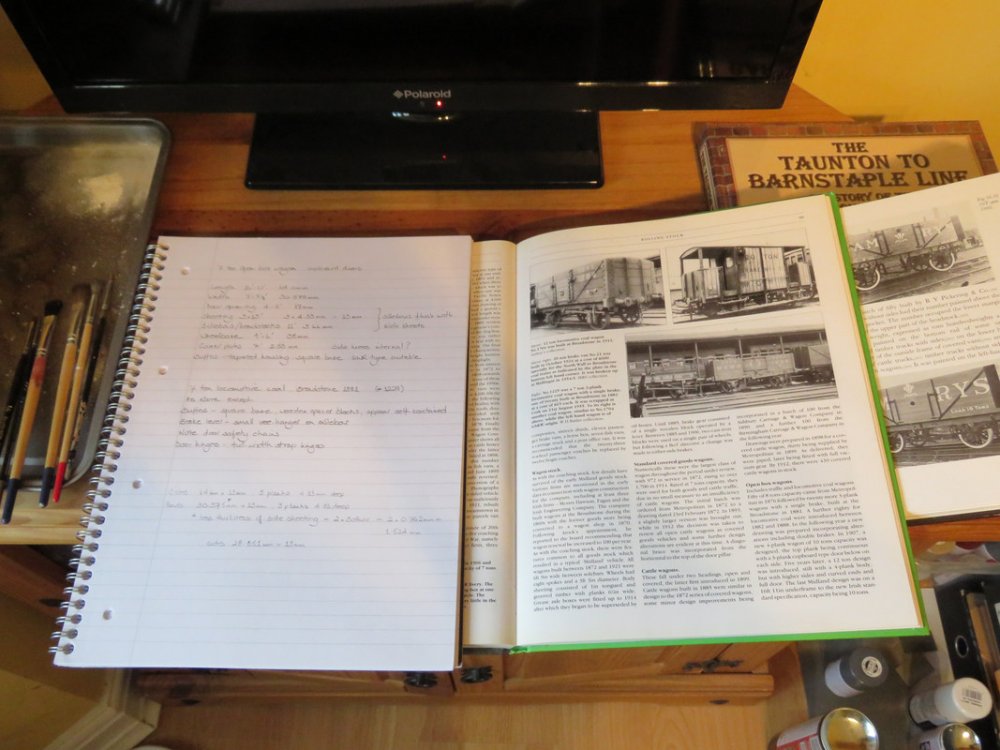
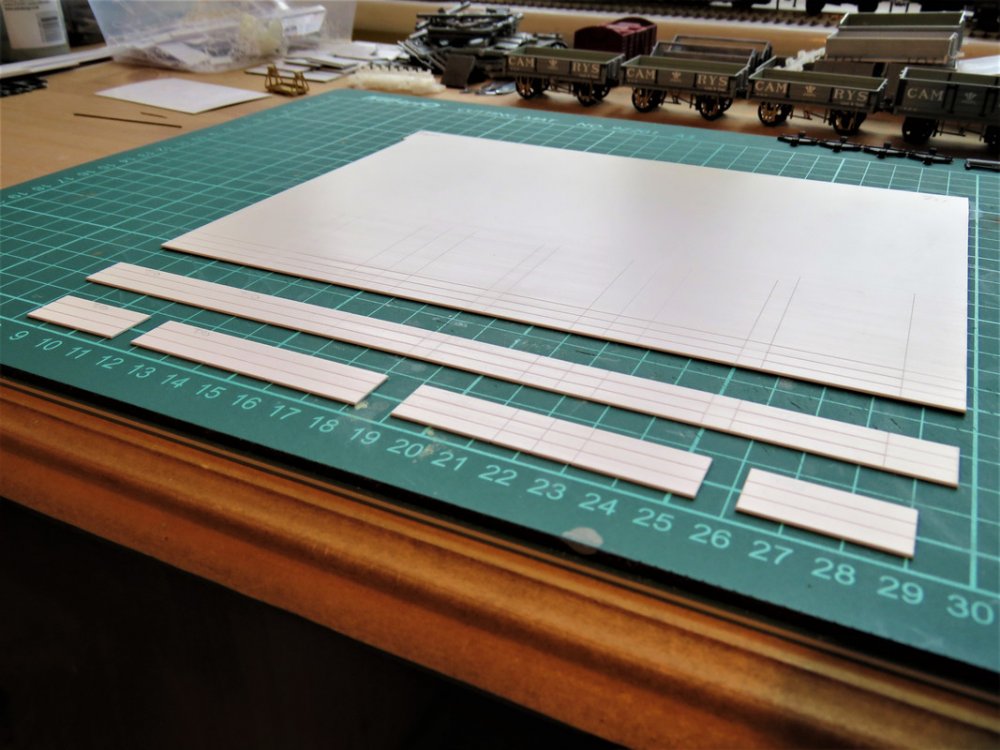

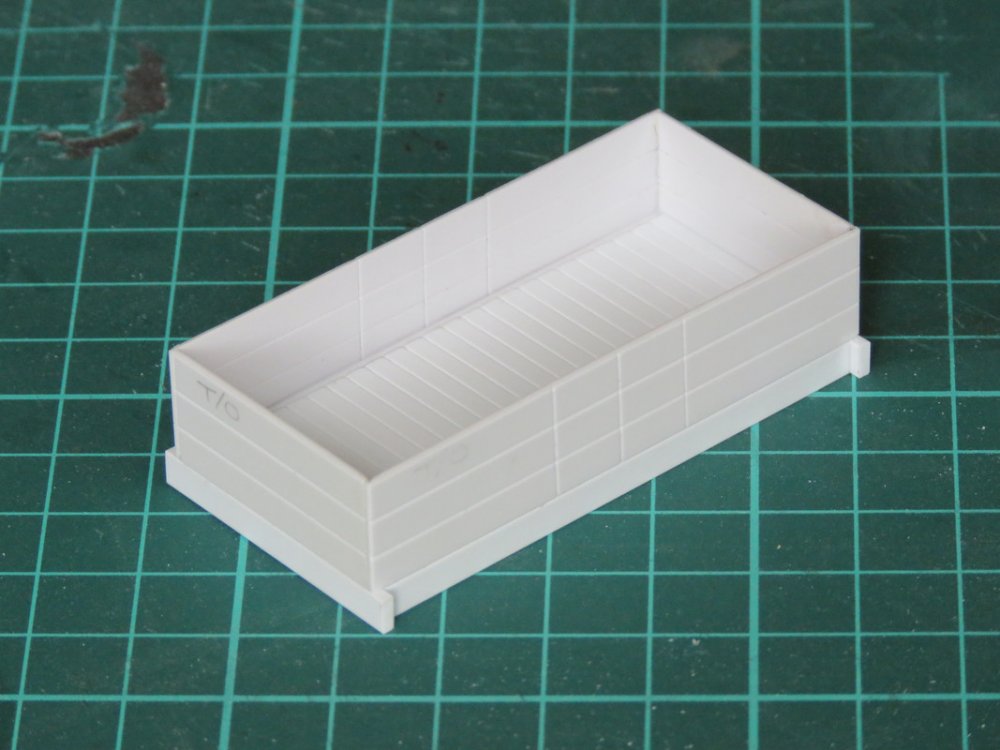

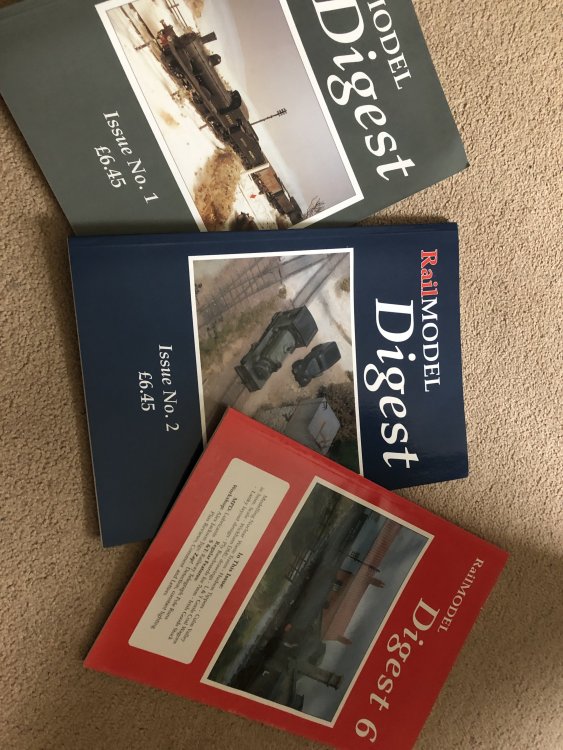
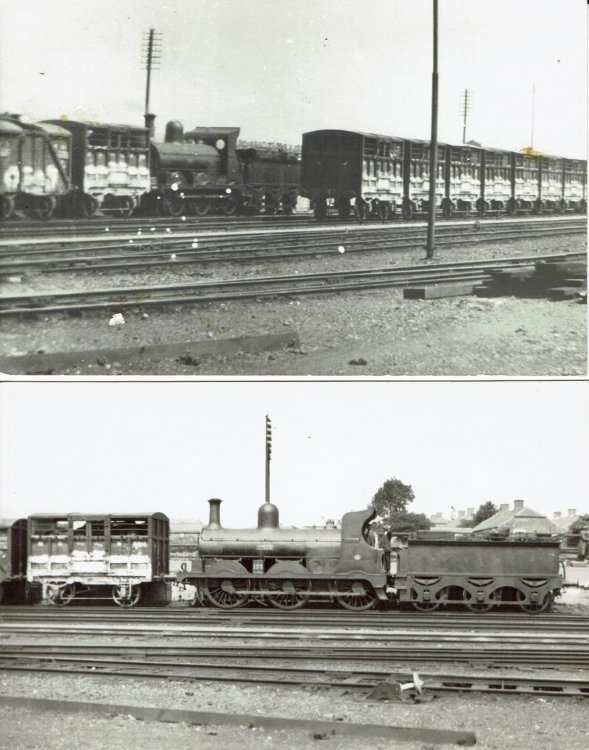
Mount Bellew, MGWR
in Irish Model Layouts
Posted
Returning to the topic of open cattle wagons, as mentioned above the HMRS has a drawing available from its archives, although they are of course completely closed at present.
I've taken a screen shot, however, and in between looking at ballast wagons I've been studying that as well. Although definitely "do-able", it's a complicated vehicle for a scratchbuild and the idea of building a large number is quite daunting. However, it occurs to me that it's a perfect vehicle for 3D-printing.....
There are a few photographs coming to light, so the next stage with this is to determine how many variations in design there were, and which were the most common.
There's an excellent photograph of a rake of four open cattle wagons at Westport Quay in "Rails to Achill", by Jonathan Beaumont @jhb171achill, and the photos posted above by @Mayner.
Anyway, that's all on the "to-do" list!
With kind regards,
Mark